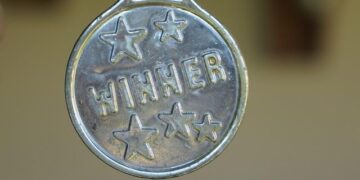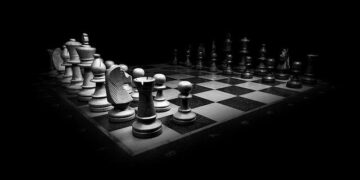A debate has long percolated among researchers as to whether what happens after taking a psychedelic drug results from the placebo effect—rooted in a person’s belief that taking psilocybin or ketamine is going to give them a transformative experience. Boris D. Heifets, an associate professor of anesthesiology at the Stanford University School of Medicine, has been tackling this question amid his broader laboratory investigations of what exactly happens in mind and brain when someone takes a psychedelic. How much of this sometimes life-altering experience is chemical and empirical, and how much is mental and subjective? It turns out the effects may consist of a lot more than just a simple biochemical response to a drug activating, say, the brain’s serotonin receptors. Heifets recently talked with Scientific American about his years-long quest to define the essence of the psychedelic experience.
[An edited transcript of the interview follows.]
Are we coming any closer to understanding how psychedelics work and how they work in the context of therapy. Are we closer to using these transformational experiences to treat psychiatric disorders?
On supporting science journalism
If you’re enjoying this article, consider supporting our award-winning journalism by subscribing. By purchasing a subscription you are helping to ensure the future of impactful stories about the discoveries and ideas shaping our world today.
Having been in this field for a while, there’s still this inescapable problem of how to study psychedelics. One framework that I find very useful is thinking about it in three categories.
There’s the biochemical drug effect, which interacts with basic brain biology—chemicals interacting with receptors on cells. That happens whether or not you can “feel” the effect of the drug. Then there is the conscious experience related to changes in sensation and revelatory, hallucinatory and ecstatic feelings. These experiences are closely tied to taking the drug, and usually we think of them as caused by the drug. But it is actually quite difficult to say whether a lasting change in mood or outlook was a result of the drug—a biochemical effect—or the trip itself, the experiential effect.
The third factor, then, is all of those aspects of the overall drug experience that are independent of the drug or trip—the non-drug factors, what [psychologist and psychedelics advocate] Timothy Leary called the “set and setting.” How much does your state of mind and the setting in which you take a drug influence the outcome? This category includes expectations about improvement in, say, your depression, expectations about the experience, the stress level in the environment. It would also include integration, making sense of these intense experiences afterward and integrating them into your life. And it’s useful to put each of these things in its own box because I think each of them is somewhat isolated. The goal is to make each box smaller and smaller, to really deconstruct the pieces.
So how have you gone about examining all this?
One example of how we’ve used this framework in our research is an experiment in which we gave [participants with depression] ketamine during general anesthesia. The idea was to explore just the biochemical drug effect by blanking out conscious experience to see whether people got better from their depression.
Our intention with this experiment was to get at this question that a lot of people have been asking: Is it the drug or the trip that is making someone better? You can address that question in a couple of different ways. One is to redesign the drug to eliminate the trip. But that is a very long process. As an anesthesiologist, my solution of course was to address the problem with the use of general anesthesia. We used the anesthetics to basically suppress conscious experience of the associated psychological effects of ketamine, which many people think may be relevant and even crucial to the antidepressant effects.
We collaborated closely with psychiatrists Laura Hack and Alan Schatzberg, [both] at Stanford, and we designed this study to look like every ketamine study in the past 15 years. We picked the same type of participants: [people] with moderate to severe major depressive disorder who had failed other treatments for moderate or severe depression. We administered the same questionnaires; we gave the same dose of ketamine.
The difference was these participants happened to be coming in for surgery for hips, knees, hernias, and while they were under general anesthesia, we gave them a standard antidepressant dose of ketamine. Because the patients were under anesthesia and couldn’t tell whether they were on a drug or not, this may have been the first blinded study of ketamine.
What was surprising was that the placebo group [who received no ketamine] also got better, indistinguishably from those who received the drug. Almost 60 percent of the patients had their symptom load cut in half, and there was at least 30 percent remission from major depressive disorder. These were patients who had been sick for years, and that finding was a big surprise. In a sense, it was a failed trial in that we couldn’t tell the difference between our two groups.
What I take from that is really that this doesn’t say much about how ketamine works. What it does say is just how big a therapeutic effect you can attribute to nondrug factors. That’s what people call the placebo effect.
It’s a word that describes everything from sugar pills to our surgeries. In our case, it may have had something to do with the preparation for the surgery. We messaged patients early; we engaged with them early. They weren’t used to people being interested in their mental health.
What did you discuss?
We talked to them for hours; we heard about their histories; we got to know them. I think they felt seen and heard in a way that many patients don’t, going into surgery. I’m thinking about parallels with the preparation steps for psychedelic trials. Patients in both types of research are motivated to be in these studies. In our study, they were told that they were testing the therapeutic potential of a drug and that there was a 50–50 chance they might get it. And then there was the big event of actually having the surgery. In this case, it was similar to having a psychedelic trial—a big, stressful, life-impacting event.
The patients closed their eyes and opened them after the surgery, and in many cases, they had the sense that no time had passed. They knew they went through something because they had the bandages and scars to prove it. What I take from that is that these nondrug effects, such as expectations of a particular outcome, are almost certainly present in most psychedelic trials and are independently able to drive a big therapeutic effect.
It became obvious that people had powerful experiences. Most people don’t spontaneously improve from years of depression. After surgery, they get worse. That’s what the data show. And the fact that we’re able to make this degree of a positive impact after hours and hours of interpersonal contact and messaging, that’s important. This was a really clear demonstration to me that nondrug factors, such as expectations and feelings of hope, contribute a substantial portion to the effects we’ve seen. And you would be foolish to disregard those components in designing a therapy. And, you know, the truth is that most clinicians make use of these techniques every day in building a rapport with patients, leveraging this placebo response.
Does that suggest in any way that the effects of psychedelics might be substantially—or perhaps entirely—placebo effects?
So this is where I think you have to ask the question: What do we mean by placebo? Characteristically, people use the word placebo in a kind of a dismissive way, right? If a person responds to placebo, the subtle implication is there was nothing wrong. And that’s not what we’re talking about here.
Think about everyday situations that bring about life changes. A heart attack or near-death experience may cause someone in a high stress job to change their job and lifestyle habits—exercising and eating better. That all can be grouped under the label of a placebo effect.
Another possibility to achieve the same goal is having a transformational experience that you then use to make changes in your life. So the question is: How do you do this in a practical way? You can’t exactly go out and give people heart attacks or even send them on life-changing experiences, such as skydiving or on trips to the Riviera. But you can give them a psychedelic. That’s a big, powerful experience. In many cases, that is unique in some people’s lives and confers the opportunity to make changes for the better.
How does giving an actual psychedelic drug to someone in a clinical trial relate to the three categories you mentioned earlier?
Let’s circle back to this idea that psychedelic transformation could rely either on the biochemical effect, the experience of the trip itself, or nondrug factors. Our study of ketamine during anesthesia really highlighted the role of nondrug factors such as expectation but didn’t really get at the question of “Is it the drug or the trip?”
To answer that, some [of my] scientist colleagues are testing nonpsychedelics, or nonhallucinogenic psychedelic derivatives, to see whether patients with depression, for example, get better after treatment with a drug that can cause some of the same biochemical changes as a classical psychedelic but doesn’t have a “trip” associated with it. That’s “taking the trip out of the drug.” But what if you could “take the drug out of the trip,” meaning [the creation of] an experience that is reproducible across people that checks many of the same boxes as a classic psychedelic-induced trip but that doesn’t actually require the use of a psychedelic molecule? So what, in this context, you provide people with is a profound experience that can even be somewhat standardized so you can study it. And it would be powerful and vivid and meaningful and revelatory. Do you get the same types of effects?
That would not be definitive evidence. But it would strongly suggest that maybe there’s nothing intrinsically special about the activity of a drug that activates a particular receptor that mediates the effects of psychedelics. What that would do is put front and center the role of human experience in psychological transformation.
So you might be able to bypass the need for a psychedelic drug if you can get the same result with a nonpsychoactive drug?
Maybe you can—we just don’t know. That’s an empirical question.
To try to answer that question, I’ve worked closely with Harrison Chow, also an anesthesiologist at Stanford, on a protocol that we call “dreaming during anesthesia.” It’s really a state of consciousness that happens before emergence from anesthesia. When patients awaken from surgery, they progress from a state that is deeper than sleep. And they pass through a number of conscious states, some of which produce dreams. They wake up, and about 20 percent of patients will have some dream memory imagery.
What we do is prolong that process and use EEG [electroencephalography] to home in on a specific biomarker of that state. We can hold someone in this preemergent state for 15 minutes. Participants wake up, and the stories they tell are very hard to ignore. These are some of the most vivid dreams they’ve ever had. They say things like “that was more real than real.” The participants with trauma dream of reintegrating their body map, reimagining their body [as] once again whole. We had a participant who had been assigned male at birth and had gender-affirming] surgery. She had been in the military and reimagined her life before her gender-affirming care. She saw herself doing high-intensity military training exercises, now with her body aligning with her gender.
These are intense experiences—vivid, emotionally salient, possibly hallucinatory. We published a couple of case reports now where we actually have seen therapeutic effects on a par with what we see in psychedelic medicine: powerful experiences followed by a resolution of symptoms in a psychiatric disorder.
What we’re seeing is a shared physiology in terms of EEG results for these dream states and the EEGs present for psychedelics. We see at least some shared phenomenology in terms of description of the experiences, and there are also similar therapeutic effects.
What are some of your next steps?
In addition to possibly producing a very compelling therapeutic using the common anesthetic propofol, we are working hard to develop experimental tools using anesthesia, using our knowledge of how placebo works in the brain to separate these three factors: the drug effect, the experiential effect and nondrug factors. At least two of those big effects, neither of which depends on administering a psychedelic, appear to be capable of generating a profound therapeutic impact that certainly would be sufficient on its own to claim the outcomes seen in psychedelic trials. And that, to me, shows that maybe the emphasis is misplaced when we’re focused on reengineering the drug to get rid of hallucinogenic effects. We should be focused on reengineering the experience.
But we’re still working on number three, the drug effect. We have collaborations with David Olson, a chemist at the University of California, Davis, who has pioneered the use of nonhallucinogenic psychedelics. We are helping to characterize the profound neuroplastic effects of a drug he has developed that appears, at least in mice, not to trigger the same type of brain activation that classical psychedelics do. What I’m trying to convey is that, using these approaches, we are able to get some traction to experimentally define, isolate and identify the components of this very complex therapeutic package we call psychedelic therapy.
>>> Read full article>>>
Copyright for syndicated content belongs to the linked Source : Scientific American – https://www.scientificamerican.com/article/what-makes-a-psychedelic-experience-not-always-a-drug-it-turns-out/






























